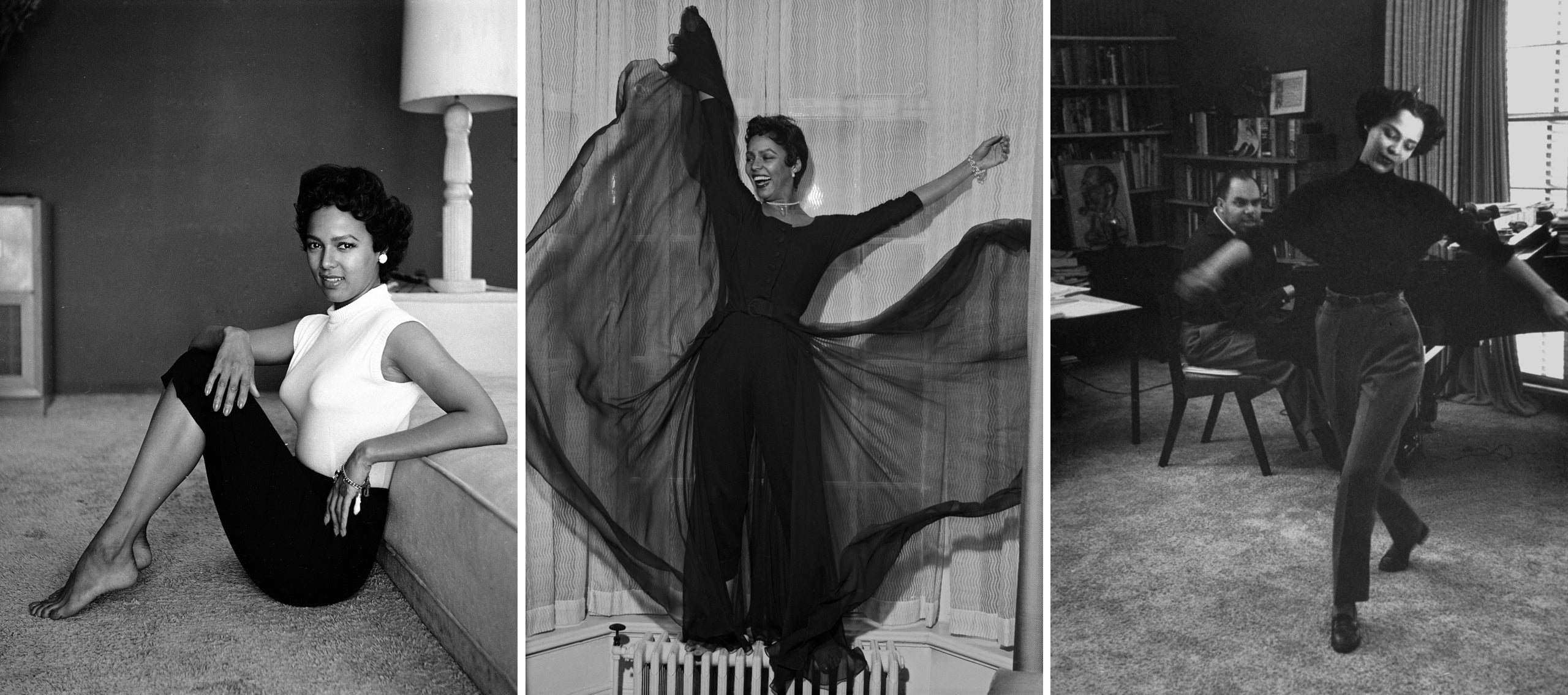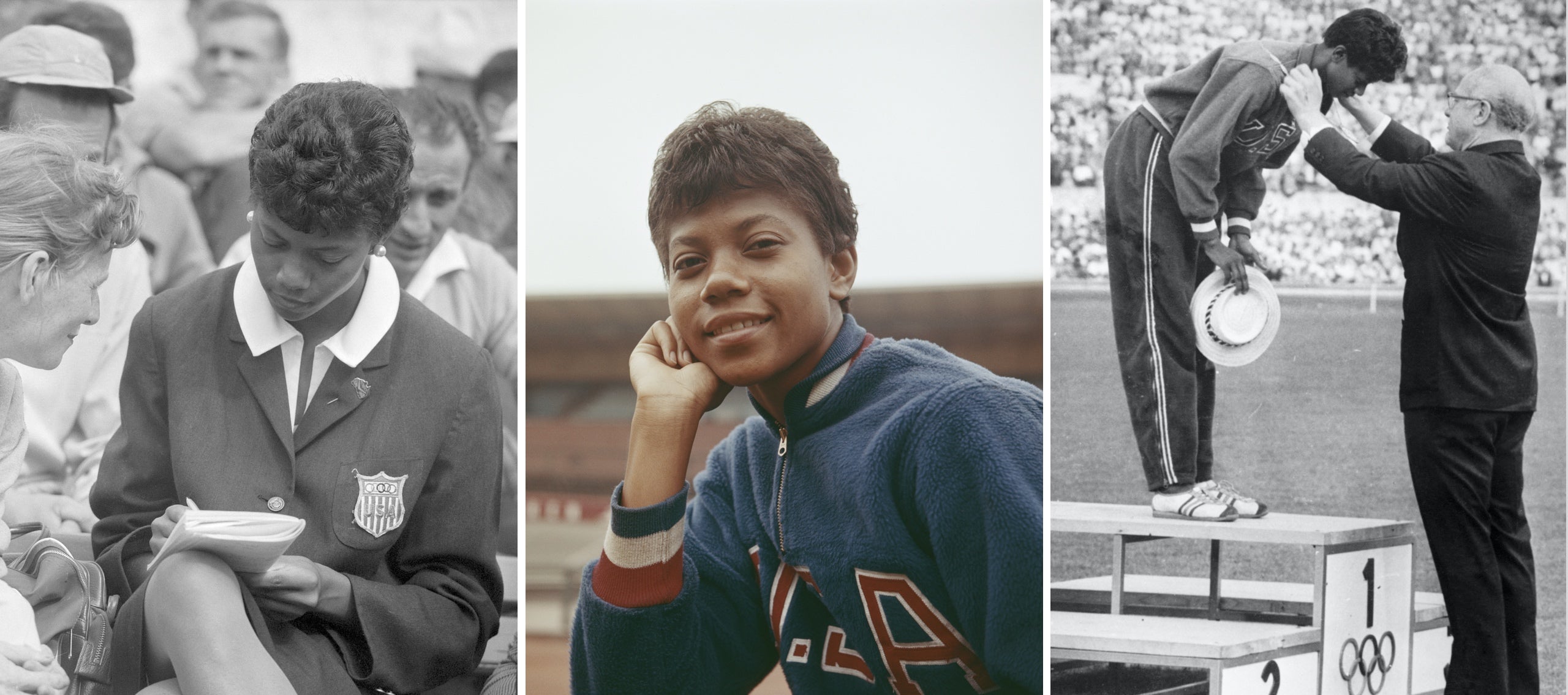
American
Dreamers
To celebrate Black History Month, we salute seven cultural icons whose actions and legacy inspire us to dream
At Ralph Lauren, our purpose is “to inspire the dream of a better life through authenticity and timeless style.” Our belief in the American dream—what it represents, how we live and experience it—is at the core of who we are as a company.
To continue sharing stories rooted in American culture, we must keep what inspires us at the forefront—its people, culture, and lifestyle. In celebration of Black History Month, we honor and salute seven cultural icons whose actions and legacy never cease to inspire us to dream. Moving forward, we promise to tell more stories that elevate the Black experience as we continue to reexamine our portrayals of the American dream—because Black history is American history.
SIDNEY POITIER
At the start of his career, legendary actor Sidney Poitier turned down the stereotypical roles offered to Black performers at the time. Instead, he chose to offer a different lens on Black people, Black life, and the Black experience. His most notable film, Guess Who’s Coming to Dinner, centered on the union of an interracial couple at the height of the civil rights movement. In it, Poitier was purposely portrayed as the most poised character. The film sent an important message to America about racial equality and combatted stereotypes perpetuated against Black people. Known for his impeccable presence both on and off stage, Poitier was a cultural icon who challenged societal expectations and broke barriers simply by remaining true to himself.








DIAHANN CARROLL
In addition to acting, Diahann Carroll was an activist, singer, and model who broke barriers in many areas, including fashion. She was, without a doubt, a cultural icon who has influenced women for generations. Carroll won a Tony Award for best actress in 1962 for her role in the Broadway musical written for her, No Strings—a first for a Black woman. She went on to captivate a diverse audience in her most memorable role as the title character of Julia, in which she was the first to portray a Black professional woman on television. A lasting inspiration, Carroll embodied style, grace, and confidence.
DOROTHY DANDRIDGE
Acclaimed actress, singer, and dancer Dorothy Dandridge began her career performing in clubs across the country during a time when segregation was still prevalent. In 1954, she starred in the musical classic Carmen Jones, earning her a nomination for an Academy Award for best actress. She became the first Black woman nominated in that category. A heroine with a daring sense of style, Dandridge was an effortless icon whose tailored, sophisticated looks still inspire today.

HARRY BELAFONTE
The “King of Calypso,” Harry Belafonte is a singer, songwriter, actor, and activist who incorporated his heritage into his art, bringing Caribbean-style music to an international audience. He also married his style and celebrity status with activism. Inspired by his mentor Paul Robeson, Belafonte became an ally of the civil rights movement in support of Martin Luther King Jr. Today, Belafonte continues his advocacy for humanitarian efforts. Since 1987, he has worked as an ambassador for UNICEF.










EARTHA KITT
A free spirit, world traveler, and iconic performer, Eartha Kitt did not allow the adversities she faced to stop her from achieving her dreams. Declining to conform to society’s idea of how a Black woman should dress, she instead created her own rules, styling herself as an icon of glamour and confidence. Kitt’s impressive career lasted more than five decades. Her iconic portrayal of Catwoman in the Batman series was the first non-stereotypical role on television performed by a Black woman. Her imprint on the character is still felt today.
DUKE ELLINGTON
Nicknamed “Duke” for his gentlemanly composure and attire, Edward Kennedy Ellington was a respected music composer, pianist, and bandleader. His career spanned more than six decades and earned him 11 Grammys.
Ellington’s music reflected his influences of African American and Latin sounds, gaining him worldwide fame. He performed in prestigious concert halls and clubs to diverse crowds, all the while telling the stories of Black people and the Black experience through his music. In search of new influences in the ’60s, and with the arrival of rock ’n’ roll, Ellington adapted to the new sound, erasing boundaries between genres and bridging a gap between generations. Today, Duke Ellington remains a legendary figure in style, music, and American history.





WILMA GLODEAN RUDOLPH
As a child, Wilma Glodean Rudolph suffered from polio. Doctors told her she would not walk again. Defying the odds, she became a star athlete—the first American woman to win three track-and-field gold medals in a single Olympics, completing a race in 22.9 seconds, crowning her “the fastest woman in the world.” Off the field, Rudolph made headlines for her sporty yet polished sense of style, and more importantly, for her activism. She pushed for gender parity in sports and social justice at home. A “Welcome Home” parade in honor of her Olympic wins became the first racially integrated event in her home state of Tennessee—only after she refused to attend if it were segregated.
Later inducted into the U.S. Olympic & Paralymic Hall of Fame, Rudolph remains an inspiration for young athletes to this day.

SIDNEY POITIER




At the start of his career, legendary actor Sidney Poitier turned down the stereotypical roles offered to Black performers at the time. Instead, he chose to offer a different lens on Black people, Black life, and the Black experience. His most notable film, Guess Who’s Coming to Dinner, centered on the union of an interracial couple at the height of the civil rights movement. In it, Poitier was purposely portrayed as the most poised character. The film sent an important message to America about racial equality and combatted stereotypes perpetuated against Black people. Known for his impeccable presence both on and off stage, Poitier was a cultural icon who challenged societal expectations and broke barriers simply by remaining true to himself.
DIAHANN CARROLL




In addition to acting, Diahann Carroll was an activist, singer, and model who broke barriers in many areas, including fashion. She was, without a doubt, a cultural icon who has influenced women for generations. Carroll won a Tony Award for best actress in 1962 for her role in the Broadway musical written for her, No Strings—a first for a Black woman. She went on to captivate a diverse audience in her most memorable role as the title character of Julia, in which she was the first to portray a Black professional woman on television. A lasting inspiration, Carroll embodied style, grace, and confidence.
DOROTHY DANDRIDGE

Acclaimed actress, singer, and dancer Dorothy Dandridge began her career performing in clubs across the country during a time when segregation was still prevalent. In 1954, she starred in the musical classic Carmen Jones, earning her a nomination for an Academy Award for best actress. She became the first Black woman nominated in that category. A heroine with a daring sense of style, Dandridge was an effortless icon whose tailored, sophisticated looks still inspire today.
HARRY BELAFONTE





The “King of Calypso,” Harry Belafonte is a singer, songwriter, actor, and activist who incorporated his heritage into his art, bringing Caribbean-style music to an international audience. He also married his style and celebrity status with activism. Inspired by his mentor Paul Robeson, Belafonte became an ally of the civil rights movement in support of Martin Luther King Jr. Today, Belafonte continues his advocacy for humanitarian efforts. Since 1987, he has worked as an ambassador for UNICEF.
EARTHA KITT





A free spirit, world traveler, and iconic performer, Eartha Kitt did not allow the adversities she faced to stop her from achieving her dreams. Declining to conform to society’s idea of how a Black woman should dress, she instead created her own rules, styling herself as an icon of glamour and confidence. Kitt’s impressive career lasted more than five decades. Her iconic portrayal of Catwoman in the Batman series was the first non-stereotypical role on television performed by a Black woman. Her imprint on the character is still felt today.
DUKE ELLINGTON





Nicknamed “Duke” for his gentlemanly composure and attire, Edward Kennedy Ellington was a respected music composer, pianist, and bandleader. His career spanned more than six decades and earned him 11 Grammys.
Ellington’s music reflected his influences of African American and Latin sounds, gaining him worldwide fame. He performed in prestigious concert halls and clubs to diverse crowds, all the while telling the stories of Black people and the Black experience through his music. In search of new influences in the ’60s, and with the arrival of rock ’n’ roll, Ellington adapted to the new sound, erasing boundaries between genres and bridging a gap between generations. Today, Duke Ellington remains a legendary figure in style, music, and American history.
WILMA GLODEAN RUDOLPH

As a child, Wilma Glodean Rudolph suffered from polio. Doctors told her she would not walk again. Defying the odds, she became a star athlete—the first American woman to win three track-and-field gold medals in a single Olympics, completing a race in 22.9 seconds, crowning her “the fastest woman in the world.” Off the field, Rudolph made headlines for her sporty yet polished sense of style, and more importantly, for her activism. She pushed for gender parity in sports and social justice at home. A “Welcome Home” parade in honor of her Olympic wins became the first racially integrated event in her home state of Tennessee—only after she refused to attend if it were segregated.
Later inducted into the U.S. Olympic & Paralymic Hall of Fame, Rudolph remains an inspiration for young athletes to this day.
- COURTESY OF GETTY IMAGES






